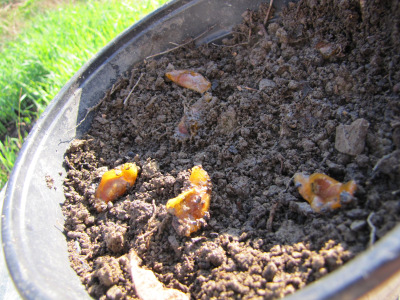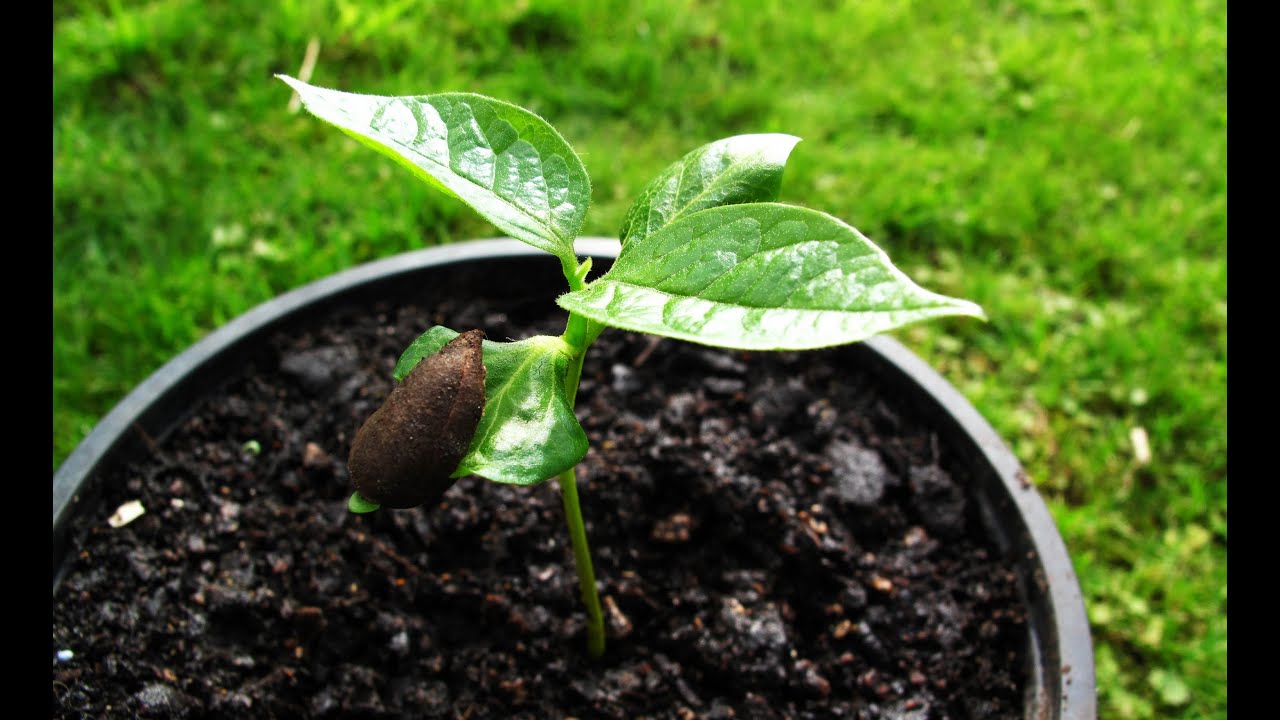To transplant persimmon from seed, carefully dig up the young seedlings and replant them in a well-draining soil. Persimmon trees can be easily grown from seeds, providing a rewarding experience for gardeners.
The process of transplanting persimmon seedlings can be done by carefully digging up the young plants and transferring them to a new location. This allows the seedlings to establish stronger root systems and promotes healthier growth. Following a few simple steps, you can successfully transplant persimmon seedlings and enhance your garden with these delicious fruits.
We will guide you through the process of transplanting persimmon seedlings and provide essential tips for their care and cultivation.

Credit: www.waldeneffect.org
Benefits Of Transplanting Persimmon From Seed
Transplanting persimmon plants from seed offers several advantages. Firstly, it allows for genetic diversity and adaptability. By growing persimmons from seed, you can introduce a variety of genetic traits into your garden, enhancing the overall resilience and adaptability of the plants. Secondly, it is a cost-effective alternative to purchasing nursery plants.
Nursery plants can be expensive, but by starting from seed, you can save money while still enjoying the benefits of persimmon trees. Lastly, transplanting persimmons from seed gives you the opportunity to select and grow unique varieties. With countless varieties available, you can choose the specific traits and flavors you prefer, resulting in a personalized and diverse home orchard.
How to Transplant Persimmon from Seed: Step by Step Guide
Seed Collection And Storage
When it comes to transplanting persimmon from seed, it is important to start with the right collection and storage of seeds. To begin, select ripe and healthy persimmon fruits for seed extraction. Avoid overripe or damaged fruits as they may produce weaker seeds. Once you have chosen the fruits, extract the seeds by cutting them open and carefully removing the inner seeds. Next, clean the seeds by rinsing them in water and removing any remaining fruit flesh or debris.
After cleaning, ensure appropriate storage conditions for optimal seed viability. Persimmon seeds should be stored in a cool and dry place, such as a sealed container or a plastic bag with ventilation holes. Ideally, the storage temperature should be around 40 to 50 degrees Fahrenheit, with a relative humidity of 50 to 60 percent. These conditions help maintain seed dormancy and prevent premature germination.
Germinating Persimmon Seeds
Germinating persimmon seeds can be achieved through various scarification methods to enhance germination. This process involves breaking or weakening the seed coat to promote better water absorption and initiate growth. One method includes gently filing or nicking the seed coat with a small knife or sandpaper. Another technique involves soaking the seeds in hot water for a few hours to soften the outer layer.
Moist stratification is also crucial in regulating seed dormancy. By storing the seeds in a moist, cool environment for a certain period, the germination process can be stimulated. Additionally, inducement of germination in persimmon seeds can be facilitated through pre-soaking in a diluted hydrogen peroxide solution or placing them in a damp paper towel. By following these techniques, one can successfully germinate persimmon seeds and embark on the journey of transplanting them.
Seedling Selection And Container Preparation
Choosing healthy and vigorous seedlings: When selecting seedlings for transplanting persimmon trees, it is important to choose ones that are healthy and vigorous. Look for seedlings that have a strong root system, without any signs of disease, pests, or damage. Healthy seedlings will have vibrant green leaves and well-formed branches, indicating their potential for successful transplantation.
Selecting suitable containers and potting mixtures: To ensure successful transplantation, it is crucial to select suitable containers for your persimmon seedlings. Opt for containers that are deep enough to accommodate the root system, with drainage holes to prevent waterlogging. Additionally, choose a well-draining potting mixture that is rich in organic matter, providing essential nutrients and moisture retention for the growing seedlings.
Preparing containers for transplantation: Before transplanting the persimmon seedlings, it is important to prepare the containers properly. Clean the containers thoroughly to remove any potential pathogens or residues. Place a layer of stones or broken pottery at the bottom of the container to improve drainage. Fill the container with the chosen potting mixture, ensuring it is evenly distributed and gently compacted.
Transplanting Persimmon Seedlings
Transplanting persimmon seedlings requires proper drainage and root development to ensure their successful growth. When preparing the planting area, it is crucial to choose a location with well-draining soil to prevent waterlogging, which can lead to root rot and hinder the plant’s establishment. Additionally, digging a wide and deep planting hole facilitates the seedling’s root system development by providing ample space for expansion and nutrient absorption.
To prevent root damage, it is essential to handle the seedlings with care during the transplanting process. Gently loosen the soil around the seedling’s root zone, making sure to avoid the breakage or tearing of delicate roots. Placing the seedling into the hole at the same depth as it was previously grown and covering the roots with loose soil promotes a healthy transition and minimizes transplant shock.
After transplantation, adequately caring for the seedlings during the initial growth stage is vital for their survival. Providing regular watering, especially during dry spells, helps to establish the transplanted persimmon seedlings. Applying a layer of organic mulch around the base of the seedlings aids in moisture retention and weed suppression. Monitoring for pests and diseases and taking appropriate measures to control them are crucial for ensuring the seedlings’ long-term health.
Selecting The Planting Site
Sunlight and soil requirements play a crucial role in the successful growth of persimmon trees. When choosing a site for transplanting a persimmon tree from seed, keep the following factors in mind:
| Considerations | Action |
|---|---|
| Space, Accessibility, and Future Growth | Ensure the chosen site provides ample space for the persimmon tree to grow and spread its branches without obstruction. Consider future growth and the potential size of the mature tree. |
| Soil Drainage and Fertility | Evaluate the soil’s drainage capability as persimmon trees thrive in well-drained soil. Test the soil fertility to ensure it provides the necessary nutrients for healthy tree growth. |
By carefully considering these factors, you can select an ideal planting site for transplanting persimmon seeds. Remember to provide adequate sunlight and ensure the soil meets the tree’s requirements for optimal growth.
Transplantation Techniques For Garden Planting
Transplanting persimmon trees from seeds can be a rewarding experience for gardeners. However, proper transplantation techniques are essential for successful garden planting.
One important step is digging a suitable planting hole. The hole should be wide and deep enough to accommodate the root system of the seedling. Carefully dig around the seedling to avoid root disruption.
When removing seedlings from containers, it’s crucial to ensure minimal root disturbance. Gently loosen the soil around the roots and avoid pulling or tearing them.
Consider planting depth and spacing when transplanting persimmons. The seedling should be planted at the same depth it was in the container. Make sure to leave enough space between seedlings to allow for proper growth and airflow.
By following these transplantation techniques, gardeners can successfully transplant persimmon trees from seeds and enjoy the beauty and bounty of their own persimmon garden.
Caring For Transplanted Persimmon Seedlings
Transplanting persimmon seedlings requires proper care to ensure their survival and healthy growth. One important aspect is providing the right amount of water. Young transplants should be watered regularly, keeping the soil moist but not overly saturated. Watering frequency may vary depending on the climate and soil conditions, so it’s crucial to monitor the moisture levels and adjust accordingly. To conserve moisture and control weeds, mulching around the seedlings is highly recommended.
Mulch acts as a protective layer, preventing water evaporation and reducing weed competition. Additionally, safeguarding the seedlings from pests and diseases is essential. Regular inspection and timely intervention can help detect and treat any issues that may arise. By diligently addressing these care aspects, you can foster the successful transplanting of persimmon seedlings and promote their overall health and vigor.
Frequently Asked Questions For How To Transplant Persimmon From Seed
How Do You Prepare Persimmon Seeds For Planting?
To prepare persimmon seeds for planting, first remove the seeds from ripe fruits. Wash the seeds and let them dry for a few days. Stratify the seeds by placing them in a sealed plastic bag with a moist paper towel for about a month.
Plant the stratified seeds in well-draining soil and water regularly.
How Long Does It Take For A Persimmon Tree To Grow From Seed?
A persimmon tree takes about 7-10 years to grow from seed. The tree’s growth rate can vary depending on various factors such as soil conditions and climate. Proper care and maintenance are crucial for the tree’s health and development.
How Long To Stratify Persimmon Seeds?
Stratify persimmon seeds for 60-90 days at 34-41°F (1-5°C) in a damp medium.
How Long Does It Take For A Persimmon Seed To Germinate?
The germination period for persimmon seeds can vary, but typically it takes about 3 to 8 weeks for the seed to germinate. The process can be sped up by stratifying the seeds in the refrigerator for a few weeks before planting.
Conclusion
Transplanting persimmons from seed can be a rewarding and enjoyable experience. By following the step-by-step guide outlined in this blog post, you can successfully grow your own persimmon tree. Remember to provide adequate care and attention to ensure the healthy growth of the transplanted seedlings.
Happy gardening!

